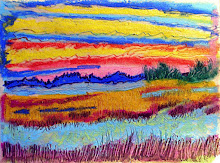Friday, February 1, 2013
Review of Four Stories and Their Poems
by David Fraser
In Four Stories and
Their Poems, Don Schaeffer depicts three characters, Jacob, Morely and
Moshe, who are searching through the remnants of their lives and their ideas.
Jacob in the story, “When Marcie Died”, is attempting to define death. He knows
of death, since in a lifetime it has been all around him, but he doesn’t know
it in terms of his perception and his identity. Like all of us, once we know
death, it’s too late to communicate it to anyone.
There is a sense of loneliness in
his characters in each story. Jacob feels the need for people to join together,
to be voices together, to have eyes to witness and share together. We see
Jacob’s trapped existence, living with cats who are oblivious, who live their
own lives in and around him as he goes about the routine of rising, brushing
his aging teeth, and taking a daily shower. He is “a strange non-participating
man, speaking an odd idiosyncratic language” and as an aged man, he becomes a
person without a voice where “the routes to sunshine are cut off because he
speaks.”
The poems between the stories
thematically enhance the mood and message of each preceding story.
“small and selfish/. . ./I sit and
wait/not knowing what to do.”
–
“The Creaking”
“When you refuse and disagree,/the light of the
world/diminishes . . .”
– “Social Media”
In the story, “Two Dreams” we find
a sense of alienation with the character, Moshe. He is “half visible” shuffling
“among creatures with raised eyes and straight determined looks.” He is a ghost “not speaking up, not saying
hello,” and “not knowing how to make his voice call up his visibility.” Moshe
“never felt a hero in his own house” because of a career “marred by personal
flaws.” He walks among shadows and he, himself is a shadow in a hollow world
from which he has withdrawn.
The poems echo the alienation and
the coldness of the world around him.
“They had dinner in the plastic
cafeteria,
fitted to look like Acapulco,
which they would never see”
- “Wednesday
Night Out”
and
“He cooperated with less than a
whole heart,
half visible because
he couldn’t take it for granted.
So the world never fully paid him.”
-
“Moshe”
Morely, a character in “The
Complete Introvert”, likes to roll his eyes inside himself much to the
annoyance of his wife, Jodi. The world he sees is full of tunnels; tunnels
connecting buildings, connecting the natural world through its root system,
tunnels inside his body, tunnels through his mother’s house, and through the
air which are the passageways of escape.
In the poem “Quantum Foam”
passageways or tunnels are the archetypal entrance ways and exits for birth and
death.
In a sense the musings of Morely,
the introvert, touch on metaphoric imagery. With tunnels we can’t help thinking
of worm holes through space and time, liminal spaces and thresholds that go
beyond the mundane existence of eating supper and doing dishes.
In the final story, “The Inverse
Performer”, Moshe Goldberg rents an old theatre for three nights and pays each
audience member a hundred dollars to listen, or if not listen, be present so he
can affirm his existence with the dramatic presentation of his ideas. There is
a fourth wall, that wall that separates the audience from the actor and the
play that is not broken in this contrived scenario. The audience is a vague
presence in the dark, separated from a mostly darkened stage and separated from
the artist who is on the stage philosophizing metaphysically about existence
and the great questions of life. The set-up for the three nights is as if
quantum theory gets discussed by the right brain and the results are surreal as
in a Samuel Beckett play.
Each story stands on its own, but
each also layers on the others ii its tone of sadness and alienation, and the
poems structurally bind the prose together in their concise glue.
Subscribe to:
Comments (Atom)

